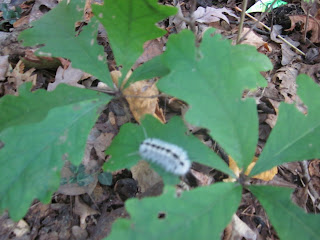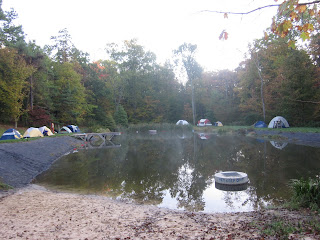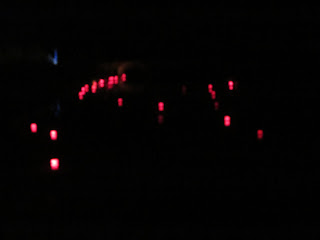I am rushing to prepare my 6th grade poetry lesson in the teacher work room, when I hear a scream from one of the women that works at the front desk. I run out and see her pointing frantically at the hallway, while making an announcement over the loudspeaker for all students to remain in the classrooms with the doors closed.
"A bat!" she shrieks. "There is a bat in the school!"
"Cool!" I exclaim.
I drop my stack of poems and rush into the hallway to find him. It does not take long. The poor, scared little thing comes flying over my head a few times, trying unsuccessfully to find his way back out of this strange building.
I stand still against the wall, watching him swoop for a minute, breathing deeply to remain calm. Finally, he lands on a bulletin board and hangs upside down from a piece of fabric. I slowly approach.
A few lucky students who did not hear the loudspeaker announcement and are still wandering the halls gather around me.
"What is it?" a fifth-grader inquires quietly.
"Whoa!" an eighth grade boy shouts.
The art teacher hands me a plastic container with a lid. I cup the container over the bat to the background noise of "oohs" and whispers from the kids. I oh-so-cautiously slide the lid underneath, careful not to damage his tiny little fingers, which are attempting to protrude out over the edge.
Once I have him in the container, I go to several rooms and tell the students to come out. They are fascinated and I allow as many of them a look as are interested. Some are scared and stay backed into the corner. Most want to see him. A few want to touch him (they don't).
I gather my 6th-graders to our classroom, where we are supposed to be having Language Arts class, still holding the container with the bat inside. I walk out through the back door and towards the woods, motioning for them to follow me. They look at each other with wide eyes, asking, "What is she doing? Are we supposed to go out into the rain? Where is she going to take him?"
"Come on!" I call from outside, beckoning them with my head, my hands tied up at the moment. A few tumble out immediately, as soon as they realize I mean for them to follow me. The rest follow hesitantly. One boy stays at the door and watches us go.
I lead them on an adventure out back to the woods, in the rain, without our coats, to deliver the bat safely to a tree. We watch in awed silence as he climbs out and attaches to the tree. We watch him begin to stick out his tiny, pink tongue to lick up the water droplets on the bark. We watch his furry body breathe rapidly.
Before we leave, I explain to the students that I have a ritual for when I see wildlife. "Every time a wild animal crosses my path, I want to remember that it is a gift. Do not take this experience lightly. This bat has blessed us today, and I am so proud of all of you for choosing bravery and curiosity over fear. Let's all bow to the bat in thanks for his presence before we leave." We all bow, a few with nervous giggles.
When we return to the classroom, I tell them that we are beginning our poetry unit by writing poems about the bat. Here are a few of their poems, completely un-revised and written in ten minutes:
Student Poem #1
free
flying
soaring through
the air
people staring
people chasing
clap
they shut
the plastic object
around me
confused
scared
I stood there
still
Student Poem #2
Thank you bat
you're a helpless tiny thing.
Everyone is scared of you!
Why?
Why are they scared of you?
They close the doors.
They hide
they scream. . .
Why are they scared of
you? For you have
saved us from our class
and we got to see
your beauty and innocence so
thank you young bat.
Student Poem #3
I saw it there
hanging on the tree
licking up sap
It was right there
right in front of me
with its brown furry body
and black leathery wings
The bat.
Billy or the Bat by Melanie Cobb
Today was supposed to be
the first day
of our new poetry unit.
I rushed to plan the lesson -
a stack of crisp, white, photocopied Billy Collins' poems
ready to go.
Ready to inspire.
The day had other plans.
A bat!
There is a bat in school!
Flying through the halls!
I drop Billy Collins on the floor
and rush to see.
"Today is not your day, Billy,"
I think.
The sixth-graders have something more exciting
to write about.










